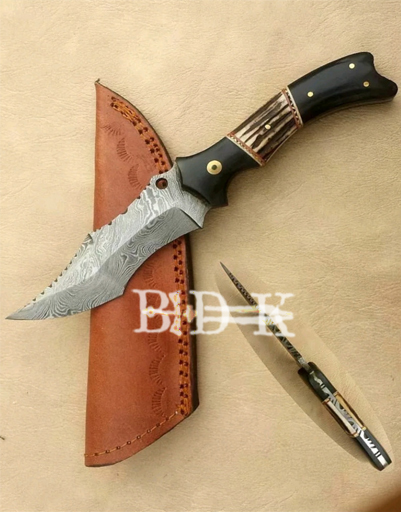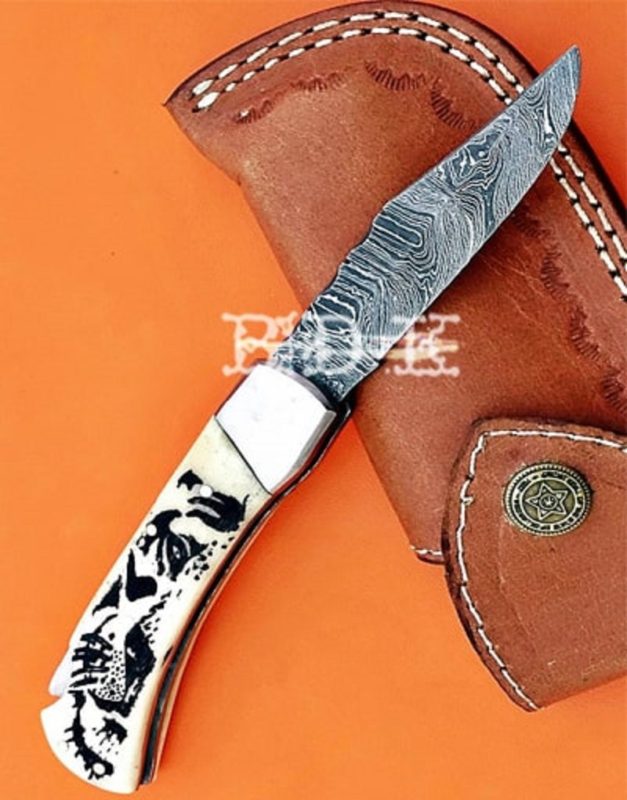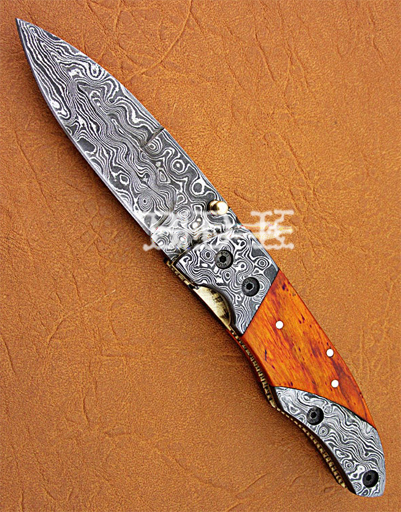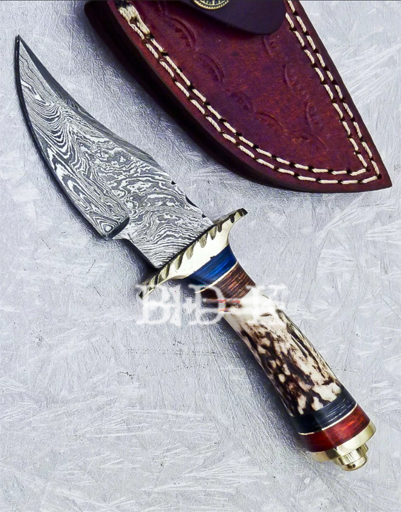We are living in a terrible world in which you may be asked to protect yourself from a violent attacker. A gun remains the gold type self-defense weapon but you may not forever own a gun accessible.
Not everyone should have a gun, bringing a gun may not be allowed where you live, or maybe it was left at home. The guns are big and heavy after all, and can not be taken everywhere with you.
The air guns can serve as well, but experience some downsides with firearms. The pepper spray can be heavy and just carries a limited quantity of deterrent. Plus some enemies can power through it.
I know some changes officers who have injuries that certify to that fact. The weapons intended to knock out an enemy, such as sap gloves, are usually more criminal than anything other than a machine gun. Knives, though, are simple to carry. They have multiple uses so you should be taking one anyway. They are further less legally-questionable than guns or short concealed weapons.
When Would You Necessitate to Utilize a Knife for Self Defense?
Initial of all, you lack to be ready to go into a knife fight, both psychologically and materially. Furthermore, you necessitate being in the method of being hit You lack to be in shape. You necessitate acknowledging the legalities of defending yourself. You lack to understand anatomy, therefore your strikes are useful. And you necessitate being able to get cut. Because nobody wins in a knife fight, you just lose less than the other guy. The chances are that as quickly as you offer armed resistance, the bad person will back down. But you necessitate being prepared for when he does not.
This indicates that if someone decides to steal your wallet you should not start flipping through a butterfly knife. You should just resort to protecting yourself with a knife when your life is previously on the line. Otherwise, you are the one placing your life in danger.
Which Type of Knife Should You Pick
Captain William E. Fairbairn is the father of modern knife fighting he further wrote many books about fighting and self-defense. He spent years in Shanghai, China, at a time when lawlessness was widespread and people fought in the streets. His practice motivated him to develop a strong knife fighting mindset, style, and knife.
According to Fairbairn, “In close-quarters fighting, there is no further dangerous weapon than the knife. In picking a knife there are two primary parts to have in mind: balance and keenness. The hilt should sit comfortably in your hand, and the blade should not be extremely heavy that it manages to pull the hilt from your fingers in a loose grip.”
About the blade, “It is vital that the blade has a sharp stabbing point and excellent cutting edges because a course was ripped through, leads to contract and prevent the bleeding. If the central artery is cleanly cut, the injured man will suddenly lose consciousness and die.”
He manifested his knife, alongside Sergeant Eric Sykes, named the Fairbairn-Sykes Fighting Knife.
The British and Americans applied it, or a derivative, for their close battle fighting in WWII.
Hobby knives now are either based on that knife or are created beside with related principles: efficiency of handling and efficient cutting.
Sadly, several knife-fighting knives either have lower utility outside of fighting or have tough-sounding names that highlight their violent culture.
This can have lawful repercussions. Advocates like to tell you were craving for a fight when you went out with the Tactical Killer 9001 and the judges might believe them. An instance of the Fairbairn-Sykes Fighting Knife If that is not a factor, these are the best knives to take. Most maximum other knives will serve well, though. You typically need a knife that is as large as feasible while remaining balanced, with an easy grip. The sharper the more beneficial. Serrations improve the capacity to deliver destructive cuts. A curve further enhances the knife’s strength to slice. Some professional fighting knives are based on the karambit, for this purpose, a knife that matches the claw of a tiger.
The decision among fixed and folding blades typically comes down to concealability and comfort of use. A fixed blade will be more comfortable to utilize but less concealable. A folding knife will take a more extended time to take into play but will be more concealable. Additionally, some jurisdictions have laws that establish which type of knife you can bring. Remember to stay on the right side of the law.
Guide: How to Use a Knife for Self Defense

1: Anatomy
The foremost point to keep in remembrance for dropping a knife fight instantly is the human body. Memorize the circulatory system to determine where to strike Guns are relatively simple; aim for internal mass and shoot. With a knife, though, you necessitate hitting an important organ or an artery. I remember someone who was hit twenty times in the back. He survived with no long-lasting injury because they were all flesh wounds. If you are moving to protect yourself with a knife, use some time learning human anatomy. Primarily the place of the arteries.
2: Grip
How you carry your knife hugely influences your ability to fight. A front grip is when the blade reaches up, on the thumb side of the hand. This grip technique enables you to reach additional and is a little bit faster. Though, a reversed grip wherein the blade is facing down is more effective. You can stab downward with a reversed grip with more enhanced strength than a stab outward with a front grip. But you additionally have to get closer to strike, which can make the fight more serious if you are not well-practiced. Since fights are chaotic things, and your knife might get knocked about, you should practice with both grips.
3: Finishing the Fight
Added essential experience to practice is releasing. When your enemy begins to back away from the battle you should stay as well. If you are protecting yourself and they begin to run away, proceeding to attack makes you the aggressor. If you do that, you are no longer operating in self-defense. If you need to survive a knife fight, determine to staunch your bleeding So practice stopping the situation when the threat is over! An excellent concept is to undertake expert guidance in fighting with a knife. Filipino Martial Arts concentrate on knife fighting. Additionally, keep an eye out for people with army or law implementation experience giving classes.
4: After the Battle
Lastly, determine how to stop the bleeding. You probably would not get out of the fight without getting cut. Therefore having the ability to stop the bleeding will put you alive long sufficient to receive expert medical care.
The Idea of Utilizing a Knife for Self Defense
The central idea of knives that are utilized for self-defense in general, is to prevent an enemy and evade dangerous bodily damage to you. This is necessary to hold in remembrance because several people appear to believe that self-defense includes attacking someone. It is the comprehensive reverse because you aim to stop the attack and not get hit. You do not do any attacking, particularly prevention and protection.
The aim is to utilize the proper quantity of force to prevent the attack. There are times where people use too much force when fighting in self-defense, and they begin to cross the line into truly attacking their enemy.
As much as feasible, do not even attempt to apply your knife. The results of a knife can severely affect someone’s life so it is necessary to truly think by your actions before acting. There is no point in severely cutting someone’s arm in self-defense if there is a more peaceful solution.
Though, there are times where you must utilize your knife in self-defense and it should be made with accuracy and attention. Make it clear simply do what is essential to offset the threat and avoid damage.
Repeatedly, the whole point of utilizing a knife for self-defense is to prevent a threat and avoid as much bodily damage to you and the enemy. It is really necessary to be able to explain the threat and use the proper quantity of force to keep you secure. After all, that is the central goal.
Conclusion
Knife fighting is not something that should be done carelessly. But if you are fully ready and have a good knife, comprehending how to use a knife for Self Defense may save your life.
As You Read This Article You May Also Like:-
- Best Chef Knives Under 100
- Best Chef Knife Under 100
- Best Damascus Chef Knife
- Almazan Kitchen Knife
- Chefs Choice Knife Sharpener Review
- Best Nakiri Knife



